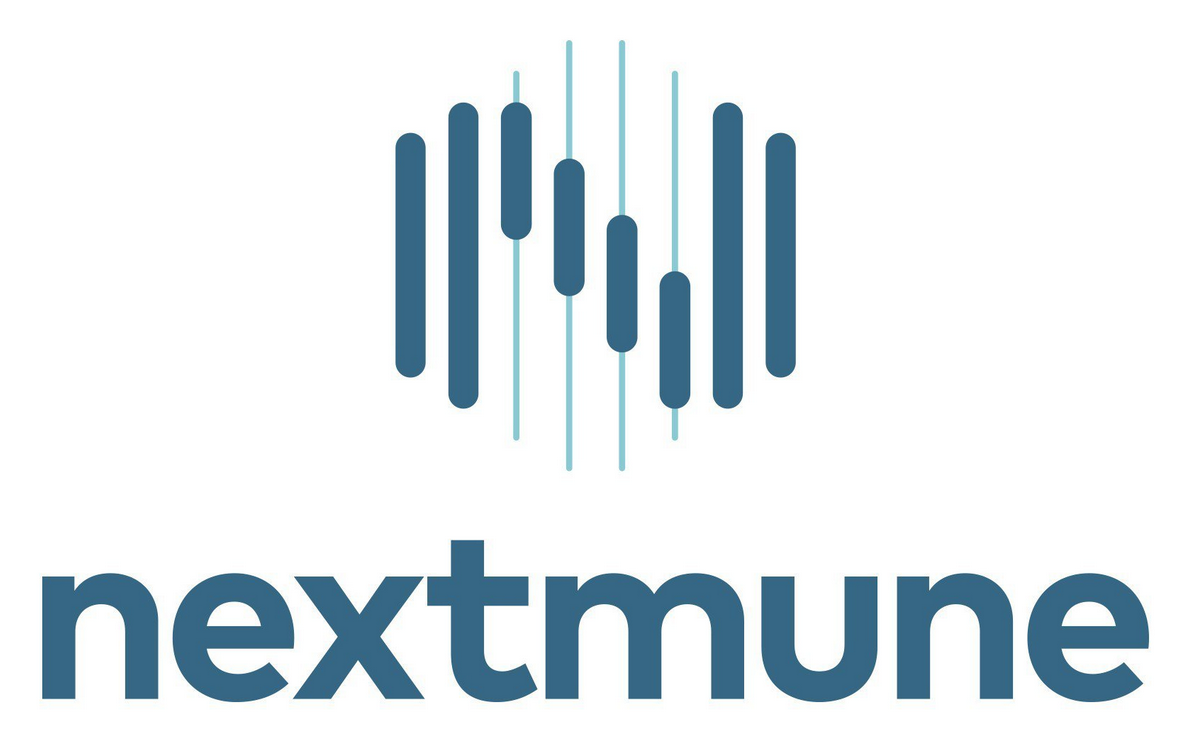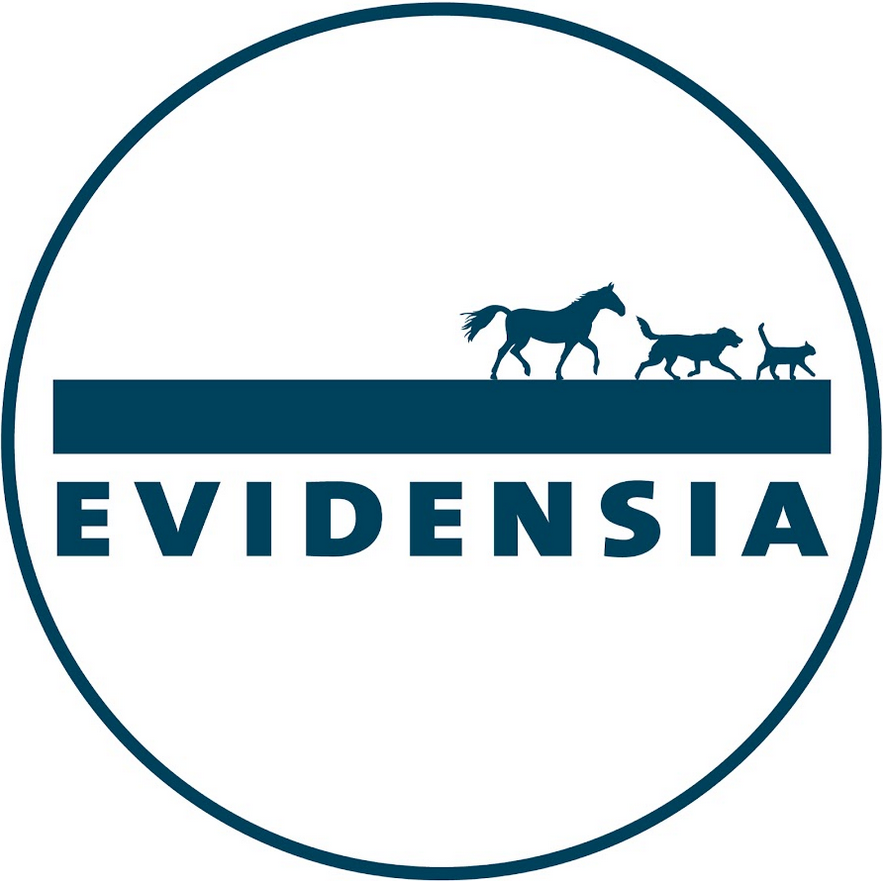Combination therapy
No results were found for your selected species
Soliphen
Active substance
ATC code
Species
Dogs (weighing at least 3 kg).
Indications
Prevention of seizures due to generalised epilepsy.
Dose to be administered and administration route
Oral use.
For the decision to start antiepileptic drug therapy, see section 4.4.
The required dosage will differ to some extent between individuals and with the nature and severity of the disorder.
Dogs should be dosed orally, starting with a dose of 2-5 mg per kg bodyweight per day. The dose should be divided and administered twice daily. The tablet can be divided into two equal parts to provide 7.5 mg doses.
Tablets must be given at the same time each day to achieve successful therapy.
Steady state serum concentrations are not reached until 1-2 weeks after treatment is initiated. The full effect of the medication does not appear for two weeks and doses should not be increased during this time.
Any adjustments to the starting dose are best made on the basis of clinical efficacy, blood concentrations of phenobarbital and the occurrence of undesired effects.
Due to differences in the excretion of phenobarbital and differences in sensitivity the final effective doses may vary considerably between patients (from 1 mg to 15 mg/kg body weight twice a day).
If seizures are not being controlled, the dosage may be increased by 20% at a time, with associated monitoring of serum phenobarbital levels. The phenobarbital serum concentration may be checked after steady state has been achieved, and if it is less than 15 µg/ml the dose may be adjusted accordingly. If seizures recur the dose may be raised up to a maximum serum concentration of 45 µg/ml. High plasma concentrations may be associated with hepatotoxicity.
Blood samples could be taken at the same time to allow plasma phenobarbital concentration to be determined preferably during trough levels, shortly before the next dose of phenobarbital is due.
If the seizures are not being satisfactorily prevented and if the maximum level concentration is about 40 µg/ml, then the diagnosis should be reconsidered and/or a second antiepileptic product (such as bromides) should be added to the treatment protocol.
Plasma concentrations should be interpreted in conjunction with the observed response to therapy and a full clinical assessment including monitoring for evidence of toxic effects in each animal.
Adverse reactions
Dogs :
|
Rare (1 to 10 animals / 10 000 animals treated) : |
Diarrhoea, emesis Ataxia1,2,3 |
|
Very rare (<1 animal / 10 000 animals treated, including isolated reports): |
Polyphagia 1, polydipsia1 Polyuria1 Sedation1,2,3 Hyperexcitability (paradoxical)2,4 Pancytopenia5 (immunotoxic), neutropenia5 Hepatic toxicosis6 Low thyroxine (T4)7, Low free thyroxine (FT4)7 |
1effects usually transitory, which disappear with continued medication in most patients.
2at the start of therapy.
3become significant concerns as serum levels reach the higher ends of the therapeutic range.
4not linked to overdosage, so no reduction of dosage is needed.
5can result from deleterious effects of phenobarbital on bone marrow stem cells.
Disappear after the treatment’s withdrawal.
6may be due to high plasma concentrations.
7This may not be an indication of hypothyroidism. Treatment with thyroid hormone replacement should only be started if there are clinical signs of the disease.
If adverse effects are severe, a decrease in the administered dose is recommended.
Toxicity may develop at doses over 20 mg/kg/day or when serum phenobarbital levels rise above 45µg/ml.
Reporting adverse events is important. It allows continuous safety monitoring of a veterinary medicinal product. Reports should be sent, preferably via a veterinarian, to either the marketing authorisation holder or its local representative or the national competent authority via the national reporting system. See the package leaflet for respective contact details.
Dispensing
POM-V - Prescription Only Medicine – VeterinarianSUMMARY OF PRODUCT CHARACTERISTICS
1. NAME OF THE VETERINARY MEDICINAL PRODUCT
SOLIPHEN 15 mg tablet for dogs
2. QUALITATIVE AND QUANTITATIVE COMPOSITION
Each tablet contains:
Active substance:
Phenobarbital 15 mg
Excipients:
For the full list of excipients, see section 6.1.
3. PHARMACEUTICAL FORM
Tablet
Oblong, white spotted tablet, with one scored line (both sides). The tablets can be divided into two equal parts.
4. CLINICAL PARTICULARS
4.1 Target species
Dogs (weighing at least 3 kg).
4.2 Indications for use, specifying the target species
Prevention of seizures due to generalised epilepsy in dogs.
4.3 Contraindications
Do not administer to animals with seriously impaired hepatic function.
Do not use in animals with serious renal or cardiovascular disorders.
Do not use in dogs weighing less than 3 kg body weight.
Do not use in cases of (known) hypersensitivity to the active substance or to any other barbiturates or to any of the excipients.
4.4 Special warnings for each target species
The decision to start antiepileptic drug therapy with phenobarbital should be evaluated for each individual case and depends on number, frequency, duration and severity of seizures in dogs.
General recommendations for initiating therapy include a single seizure occurring more than once every 4-6 weeks, cluster seizure activity (i.e. more than one seizure within 24 h) or status epilepticus regardless of frequency.
Therapeutic phenobarbital serum concentrations should be monitored to enable the lowest effective dose to be used. Typically, concentrations of 15-40 μg/ml are effective in controlling epilepsy.
Some of the dogs are free of epileptic seizures during the treatment, but some of the dogs show only a seizure reduction, and some of the dogs are considered to be nonresponders.
4.5 Special precautions for use
Special precautions for use in animals
Special care should be taken in monitoring small dogs weighing from 3 to less than 7.5 kg, for which doses cannot start at 1 mg/kg bw per administration (corresponding to 2 mg/kg bw/day), or cannot be adjusted in accordance with the recommended 20% regime, see section 4.9.
Caution is recommended in animals with impaired renal function, hypovolemia, anemia and cardiac or respiratory dysfunction.
Before beginning the treatment monitoring of hepatic parameters should be performed. The chance of hepatotoxic side effects can be diminished or delayed using an effective dose that is as low as possible. Monitoring of hepatic parameters is recommended in case of a prolonged therapy.
It is recommended to assess the clinical pathology of the patient 2-3 weeks after start of treatment and afterwards every 4-6 months, e.g. measurement of hepatic enzymes and serum bile acids. It is important to know that the effects of hypoxia can cause increased levels of hepatic enzymes after a seizure. Phenobarbital may increase the activity of serum alkaline phosphatase and transaminases. These may demonstrate non-pathological changes, but could also represent hepatotoxicity, so liver function tests are recommended. Increased liver enzyme values may not always require a dose reduction of phenobarbital if the serum bile acids are in the normal range.
In the light of isolated reports describing hepatotoxicity associated with combination anticonvulsant therapy, it is recommended that:
1. Hepatic function is evaluated prior to initiation of therapy (e.g. measurement of serum bile acids).
2. Therapeutic phenobarbital serum concentrations are monitored to enable the lowest effective dose to be used. Typically concentrations of 15-45µg/ml are effective in controlling epilepsy.
3. Hepatic function is re-evaluated on a regular (6 to 12 months) basis.
4. Seizure activity is re-evaluated on a regular basis.
Withdrawal of phenobarbital or transition to or from another type of antiepileptic therapy should be made gradually to avoid precipitating an increase in the frequency of seizures. In stabilised epileptic patients, it is not recommended to switch from other phenobarbital formulations to the veterinary medicinal product. However, if this cannot be avoided then additional caution should be taken. This includes more frequent plasma concentration sampling to ensure that therapeutic levels are maintained. Monitoring for increased side effects and for hepatic dysfunction should be conducted more regularly until stabilisation is confirmed.
The tablets are flavoured. In order to avoid any accidental ingestion, store tablets out of reach of the animals.
Special precautions to be taken by the person administering the veterinary medicinal product to animals
Barbiturates can cause hypersensitivity. People with known hypersensitivity to barbiturates should avoid contact with the veterinary medicinal product.
Accidental ingestion may cause intoxication and could be fatal, particularly for children. Take utmost care that children do not come in contact with the veterinary medicinal product. Keep this product in its original packaging to avoid accidental ingestion. Each time an unused part-tablet is stored until next use, it should be returned to the open blister space and inserted back into the cardboard box.
Phenobarbital is teratogenic and may be toxic to unborn and breastfeeding children; it may affect the developing brain and lead to cognitive disorders. Phenobarbital is excreted in breast milk. Pregnant women, women of childbearing age and lactating women should avoid accidental ingestion and prolonged skin contact with the product.
It is advisable to wear disposable gloves during administration of the product to reduce skin contact.
In case of accidental ingestion, seek medical attention immediately, advising medical services of barbiturate poisoning; show the package leaflet or the label to the physician. If possible, the physician should be informed about the time and amount of ingestion, as this information may help to ensure that appropriate treatment is given.
Wash hands thoroughly after use.
4.6 Adverse reactions (frequency and seriousness)
The most commonly reported adverse reactions are:
- Polyphagia, polyuria and polydipsia have been reported occasionally, but these effects are usually transitory and disappear with continued medication.
- Diarrhea and emesis have been reported rarely.
Toxicity may develop at doses over 20 mg/kg/day or when serum phenobarbital levels rise above 45µg/ml.
At the start of therapy, ataxia and sedation can occur, but these effects are usually transitory and disappear in most, but not all, patients with continued medication. Some animals can demonstrate a paradoxical hyperexcitability, particularly after first starting therapy. As this hyperexcitability is not linked to overdosage, no reduction of dosage is needed. Sedation and ataxia often become significant concerns as serum levels reach the higher ends of the therapeutic range. High plasma concentrations may be associated with hepatotoxicity. Phenobarbital can have deleterious effects on stem cells from bone marrow. Consequences are immunotoxic pancytopenia and/or neutropenia. These reactions disappear after the treatment’s withdrawal. Treating dogs with phenobarbital may lower their TT4 or FT4 serum levels, however this may not be an indication of hypothyroidism. Treatment with thyroid hormone replacement should only be started if there are clinical signs of the disease.
If adverse effects are severe, a decrease in the administered dose is recommended.
The frequency of adverse reactions is defined using the following convention:
- very common (more than 1 in 10 animals treated displaying adverse reaction(s))
- common (more than 1 but less than 10 animals in 100 animals treated)
- uncommon (more than 1 but less than 10 animals in 1,000 animals treated)
- rare (more than 1 but less than 10 animals in 10,000 animals treated)
- very rare (less than 1 animal in 10,000 animals treated, including isolated reports).
4.7 Use during pregnancy, lactation or lay
Pregnancy:
Use only according to the benefit-risk assessment by the responsible veterinarian.
Studies in laboratory animals have indicated that phenobarbital has an effect during prenatal growth, in particular causing permanent changes in neurological and sexual development. Neonatal bleeding tendencies have been associated with phenobarbital treatment during pregnancy.
Maternal epilepsy may be an additional risk factor for impaired foetal development. Therefore pregnancy should be avoided in epileptic dogs whenever possible. In case of pregnancy, the risk that the medication may cause an increase in the number of congenital defects must be weighed up against the risk of suspending treatment during pregnancy. Discontinuation of treatment is not advised, but the dosage should be kept as low as possible.
Phenobarbital crosses the placenta and, at high doses, (reversible) withdrawal symptoms cannot be ruled out in newborns.
The safety of the veterinary medicinal product has not been proven during pregnancy in dogs.
Lactation:
Use only according to the benefit-risk assessment by the responsible veterinarian.
Phenobarbital is excreted in small amounts in breast milk and during nursing, pups should be monitored carefully for undesired sedative effects. Weaning early may be an option. If somnolence/sedative effects (that could interfere with suckling) appear in nursing newborns, an artificial suckling method should be chosen.
The safety of the veterinary medicinal product has not been proven during lactation in dogs.
4.8 Interaction with other medicinal products and other forms of interaction
A therapeutic dose of phenobarbital for antiepileptic therapy can significantly induce plasma proteins, (such as α1acid glycoprotein, AGP), which bind drugs. Therefore special attention must be paid to the pharmacokinetics and doses of drugs simultaneously administered. The plasmatic concentration of cyclosporine, thyroid hormones and theophylline is decreased in the case of concurrent administration of phenobarbital. The effectiveness of these substances is diminished too.
Cimetidine and ketoconazole are inhibitors of hepatic enzymes: concurrent use with phenobarbital can induce an increase of serum concentration of phenobarbital. Concurrent use with potassium bromide increases the risk of pancreatitis. Concurrent use with other drugs having a central depressive action (like narcotic analgesics, morphinic derivates, phenothiazines, antihistamines, clomipramine and chloramphenicol) can increase the effect of phenobarbital. Phenobarbital may enhance the metabolism of, and therefore decrease the effect of, antiepileptics, chloramphenicol, corticosteroids, doxycycline, beta blockers and metronidazole.
The reliability of oral contraceptives is lower.
Phenobarbital may decrease the absorption of griseofulvin.
The following drugs can decrease the convulsive threshold: quinolones, high doses of β-lactam antibiotic, theophylline, aminophylline, cyclosporine and propofol for example. Medications which may alter the seizure threshold should only be used if really necessary and when no safer alternative exists.
Use of phenobarbital tablets in conjunction with primidone is not recommended as primidone is predominantly metabolized to phenobarbital.
4.9 Amounts to be administered and administration route Oral use.
For the decision to start antiepileptic drug therapy, see section 4.4.
The required dosage will differ to some extent between individuals and with the nature and severity of the disorder.
Dogs should be dosed orally, starting with a dose of 2-5 mg per kg bodyweight per day. The dose should be divided and administered twice daily. The tablet can be divided into two equal parts to provide 7.5 mg doses.
Tablets must be given at the same time each day to achieve successful therapy.
Steady state serum concentrations are not reached until 1-2 weeks after treatment is initiated. The full effect of the medication does not appear for two weeks and doses should not be increased during this time.
Any adjustments to the starting dose are best made on the basis of clinical efficacy, blood concentrations of phenobarbital and the occurrence of undesired effects.
Due to differences in the excretion of phenobarbital and differences in sensitivity the final effective doses may vary considerably between patients (from 1 mg to 15 mg/kg body weight twice a day).
If seizures are not being controlled, the dosage may be increased by 20% at a time, with associated monitoring of serum phenobarbital levels. The phenobarbital serum concentration may be checked after steady state has been achieved, and if it is less than 15 µg/ml the dose may be adjusted accordingly. If seizures recur the dose may be raised up to a maximum serum concentration of 45 µg/ml. High plasma concentrations may be associated with hepatotoxicity.
Blood samples could be taken at the same time to allow plasma phenobarbital concentration to be determined preferably during trough levels, shortly before the next dose of phenobarbital is due.
If the seizures are not being satisfactorily prevented and if the maximum level concentration is about 40 µg/ml, then the diagnosis should be reconsidered and/or a second antiepileptic product (such as bromides) should be added to the treatment protocol.
Plasma concentrations should be interpreted in conjunction with the observed response to therapy and a full clinical assessment including monitoring for evidence of toxic effects in each animal.
4.10 Overdose (symptoms, emergency procedures, antidotes), if necessary
Symptoms of overdose are:
- depression of the central nervous system demonstrated by signs ranging from sleep to coma,
- respiratory problems,
- cardiovascular problems, hypotension and shock leading to renal failure and death.
In case of overdose remove ingested product from the stomach and give respiratory and cardiovascular support as necessary.
The prime objectives of management are then intensive symptomatic and supportive therapy with particular attention being paid to the maintenance of cardiovascular, respiratory and renal functions and to the maintenance of the electrolyte balance. There is no specific antidote, but CNS stimulants, (like doxapram) may stimulate the respiratory centre.
4.11 Withdrawal period(s)
Not applicable.
5. PHARMACOLOGICAL PROPERTIES
Pharmacotherapeutic group: Antiepileptics\ Barbiturates and derivatives ATCvet code: QN03AA02
5.1 Pharmacodynamic properties
The antiepileptic effects of phenobarbital are probably the result of at least two mechanisms: decreased monosynaptic transmission, which presumably results in reduced neuronal excitability and an increase in the motor cortex's threshold for electrical stimulation.
5.2 Pharmacokinetic particulars
After oral administration of phenobarbital to dogs, the drug is rapidly absorbed and maximal plasma concentrations are reached within 4-8 hours. Bioavailability is between 86%-96%. About 45% of the plasma concentration is protein bound. Metabolism is by aromatic hydroxylation of the phenyl group in the para position, and about one third of the drug is excreted unchanged in the urine. Elimination half-lives vary considerably between individuals and range from about 40-90 hours. Steady state serum concentrations are not reached until 1-2 weeks after treatment is initiated.
6. PHARMACEUTICAL PARTICULARS
6.1 List of excipients
Cellulose, microcrystalline
Starch, pregelatinised
Lactose monohydrate
Silica, colloidal hydrated
Pig liver flavour
Dried yeast from Saccharomyces Magnesium stearate 6.2 Major incompatibilities
Not applicable.
6.3 Shelf life
Shelf life of the veterinary medicinal product as packaged for sale: 30 months.
6.4 Special precautions for storage
Do not store above 30°C. Keep the tablets in the original package. Any remaining portions of divided tablets should be replaced in the blister pocket, the blister strip should be returned to the cardboard box. Remaining tablet portions should be given at the next administration.
6.5 Nature and composition of immediate packaging
PVC/Aluminium thermosealed blister of 12 tablets.
Box of 5 blisters of 12 tablets (60 tablets).
Box of 8 blisters of 12 tablets (96 tablets). Not all pack sizes may be marketed.
6.6 Special precautions for the disposal of unused veterinary medicinal product or waste materials derived from the use of such products
Any unused veterinary medicinal product or waste materials derived from such veterinary medicinal products should be disposed of in accordance with local requirements.
7. MARKETING AUTHORISATION HOLDER
Domes Pharma
3 Rue André Citroën
63430 Pont-Du-Chateau
France
8. MARKETING AUTHORISATION NUMBER
Vm 54982/5000
9. DATE OF FIRST AUTHORISATION
23 March 2022
10. DATE OF REVISION OF THE TEXT
March 2022
Approved 23 March 2022
![]()
 TRUSTED SOURCE
TRUSTED SOURCE









